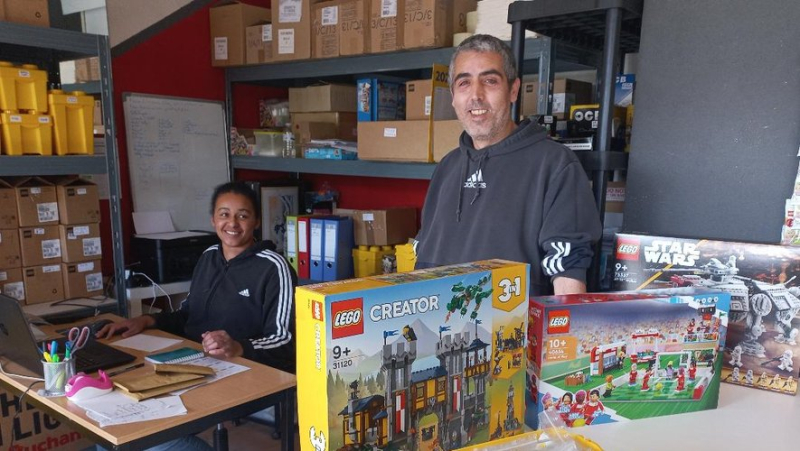In Béziers, a Lego® pro exports his bricks around the world

Karl et Olympe Gréco doivent répondre aux demandes de leurs clients en fouillant dans leurs 700 000 pièces et figurines Lego. – Frédéric Faux
Ce jeu de construction est une marque qui touche des millions de passionnés… Une vraie opportunité pour ce couple de Biterrois qui sait dénicher la "brique" ou la figurine rare.
On the desk of the small room in La Devèze, the envelopes are piling up: "These are leaving for France, explains Karl Gréco, and these for abroad: Italy, Spain, Netherlands, Australia, United States." With Olympe, his wife, he goes to look for Lego® bricks in carefully labeled boxes. or the figurines corresponding to the orders. The pace quickens. Olympe gathers all the mail in a big basket and heads to the post office: "It is absolutely necessary that we send all of this before the postman collects the mail, at 3:30 p.m.!"
It's an ordinary day in the small company Coli'brick, in a world of construction games that is much less so: "There are millions of Lego® fans around the world. You have those who build, who lose certain pieces or who want to complete their boxes to improve them, enlarge their range. And then there are the collectors". This is where Coli'brick comes in. Contacted through specialized sites or sales platforms such as Ebay, the company can provide the requested parts in record time. But this requires flawless organization.
Karl Gréco takes us into his back room, where the walls are lined with boxes, of all sizes and styles, from fire engines to Star Wars spaceships. "The most important thing to be fast is stock, he details. There, you only see part of it, I also have my personal collection in another location." pieces and figurines are also sorted and kept in specific boxes.
When the buyer knows the reference, the search is easy. When you can only provide a description, and you have to dig through the 700,000 parts in stock, it can quickly turn into a nightmare. "The worst thing is when you're convinced you'll find a figurine in a place, and it's not there, sighs Karl Gréco. This means that it has been stored incorrectly and it can take an hour to look for a very small part… It's stressful."
This father really discovered Lego® buying them for his son: "It makes you think, it makes your hands work, there are lots of advantages." How many different boxes were produced by the Danish multinational? "Impossible to know, as some were only produced for a few countries or only for Lego employees®." On the other hand, each piece being referenced , we have a more precise idea of their diversity: there are 80,000 different references.
Karl Gréco created his company five years ago, after a period of unemployment. It requires a lot of work, for sometimes very limited income, because the most common piece can only sell for a few cents. He must also take into account “the high prices and random reliability of La Poste, much less competitive than in other countries", and controls the parent company, to ensure that it does not sell second-hand or counterfeit parts.
Its major asset, however, remains flexibility. Lego®, a Danish multinational created in the 1950s, also offers this spare parts service, but "they are much less efficient", which allows professionals like Karl Gréco to do well: "There are people who are in a hurry, he concludes. For them, to wait a month to do a Lego construction, this is not possible"
I subscribe to read more




